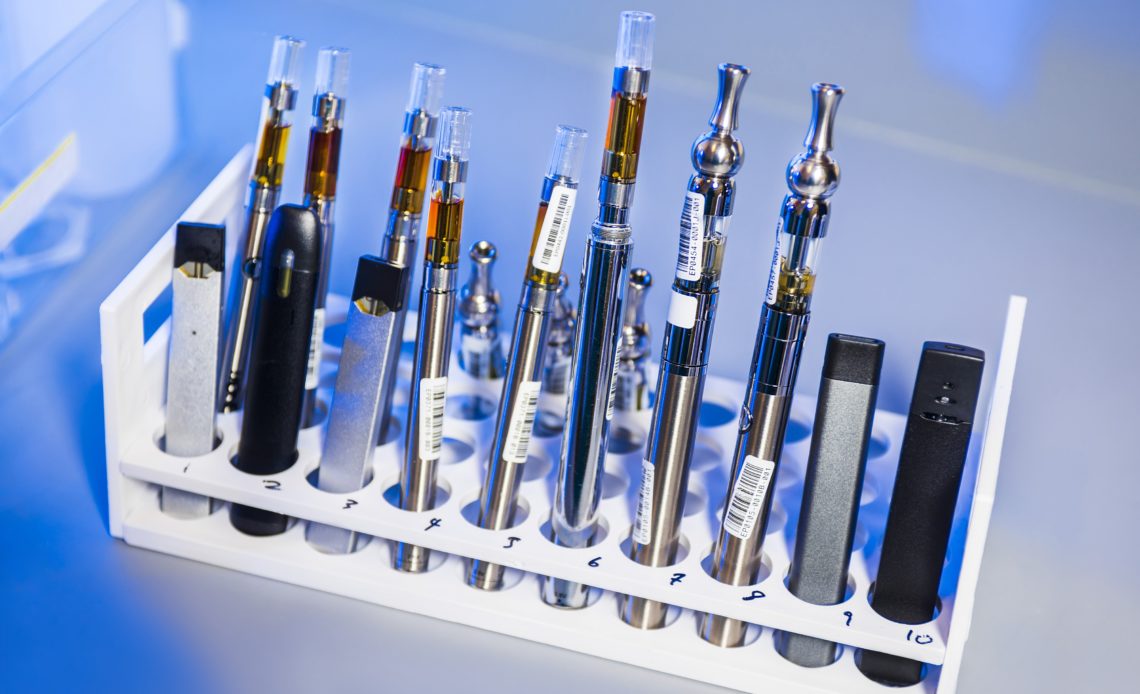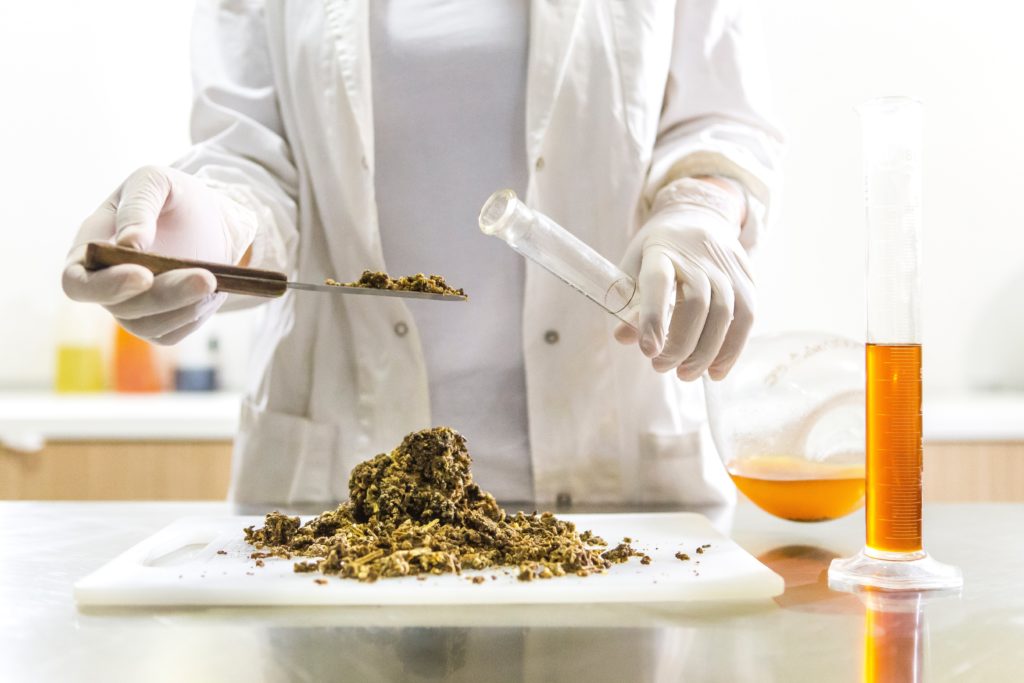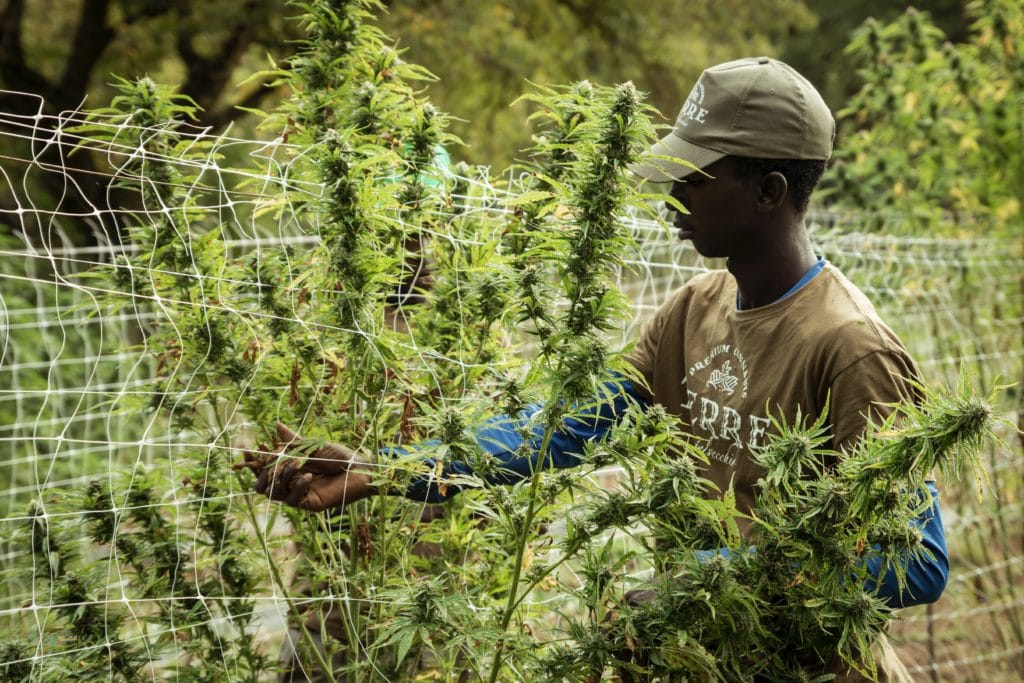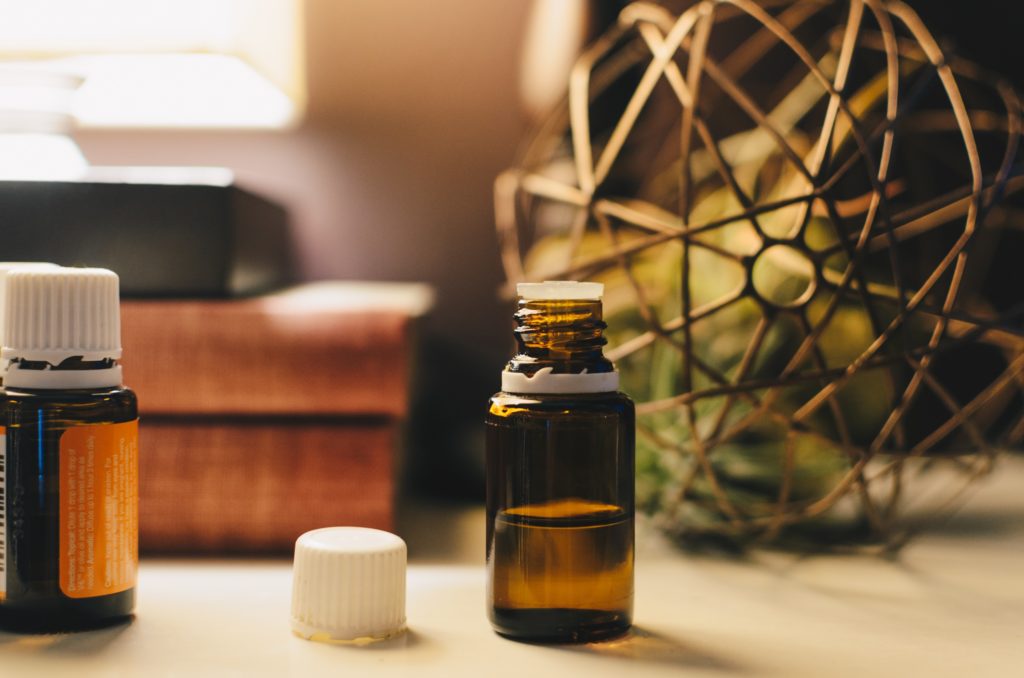
With marijuana increasingly being legalized at the state level for medical and in some cases recreational usage, its main constituents, THC and CBD, are attracting increasing interest for their potential medical applications. Research on those applications, however, is still in its infancy.
What are those applications? To quote a 2018 research review:
Potential therapeutic applications of CBD include, analgesic, anti-inflammatory, anxiolytic, anti-arthritic, anti-depressant, anti-Alzheimer disease, anti-ischemic, neuroprotective, and anti-fibrotic. More promising areas appear to include diabetes and cancer where CBD exhibits lesser side effects and more therapeutic benefits as compared to recent available medical therapies.
So—lot’s of promise there! But it’s important to keep in mind that we’re still in early, early stages of having a mature, well-rounded body of research on the therapeutic benefits of CBD.
What Is CBD, Anyway?
CBD is referred to by acronym so often, many people don’t even know its actual name: cannabidiol. It’s one of 133 (and growing) cannabinoids found in cannabis, of which THC and CBD are the most common and most studied. This class of drugs is so named because it acts on the cannabinoid receptors in the brain.
You may have heard that CBD is not psychoactive like THC, but this isn’t entirely accurate. It’s true that CBD doesn’t have the major psychoactive effects of THC—it doesn’t get you high, isn’t addictive or euphoric, and doesn’t cause dizziness, disinhibition, or memory loss. However, since some of CBD’s many benefits include anti-anxiety and anti-depressant properties, it is better described as minimally psychoactive rather than non-psychoactive. This distinction is often missed, even by researchers.
Structurally, CBD is very similar to THC, being composed of two rings of carbon, oxygen, and hydrogen (hydrocarbons), differing only in the location and orientation of a T-shaped hydrocarbon structure in one corner of the molecule. In fact, TCH and CBD are formed from the same parent molecule, cannabigerolic acid.
Notably, under acidic conditions, CBD can be cyclized to THC. This also occurs when cannabis is smoked. This is all the more reason to think of CBD as minimally psychoactive, rather than non-psychoactive. Remember this, as it will come up later.
The terminal half-life of CBD is 18 to 32 hours in humans. That means that if you take it every day, it will build up over time, with blood levels taking well over a week to effectively peak.
What’s The Current State Of CBD Research?

Although it has been legalized in many states, marijuana remains a Schedule I Controlled Substance on the federal level. And contrary to popular belief, CBD—even in isolation—is also classified as Schedule I. Of course, that doesn’t prevent it from now being sold in most states, and it’s often available in places where THC isn’t. But that doesn’t change the issue that criminalization has hampered CBD research for decades.
Beyond just preventing personal use or marijuana products, these legal restrictions have also severely limited research into CBD and its potential medical benefits. Research on CBD has mostly been illegal in the United States, and even when legal, has often been impossible due to difficulty securing government funding. As you’ll see, most of the research cited in this study comes from other countries.
For the time being, research on both marijuana in general and CBD in particular remains limited. Epidemiological research—studies in which researchers ask subjects about their drug use, but don’t actually use CBD in the study—has never been restricted, but is applicable primarily to drug prevention.
Thankfully, it seems Congress may soon ease federal restrictions on marijuana, allowing states to enact their own policies. From a scientific research perspective, this would be a massive improvement, as it would finally allow American scientists to freely study CBD and other marijuana derivatives.
Additionally, the FDA has already begun considering CBD-containing formulas for highly specific, difficult-to-treat illnesses. The first to be approved was Epidiolex, a CBD-based oral solution for treating epilepsy, in 2018.
The Many Medical And Psychiatric Uses of CBD
We just mentioned that a CBD-based drug has been approved for treating epilepsy. So far, the research support for the effectiveness of CBD on the symptoms of epilepsy has mostly been limited to refractory epilepsy in children, but it’s possible the benefits are broader than that. A related line of research has identified CBD as potentially effective for treating drug-resistant seizures in people suffering from Dravet Syndrome.
Psychologically, CBD has been shown to be effective at reducing anxiety, depression, and psychotic symptoms. Studies, however, have produced a wide and conflicting range of effective dosages. Some studies find reductions in general anxiety at 10 mg; others find 300-600 mg are needed to reduce acute anxiety, with no reduction in baseline anxiety.
Psychologically, CBD has been shown to be effective at reducing anxiety, depression, and psychotic symptoms. Studies, however, have produced a wide and conflicting range of effective dosages.
This may be due to CBD’s interaction with other neurotransmitters; one study on CBD as an anti-depressant found the effects were dependent on brain serotonin levels. Another study found that while CBD appears to be an effective anti-psychotic, forming any sort of research consensus is made more difficult by a lack of standardized methodology and outcome measurements.
Other lines of research suggest more physical benefits for the brain. Some studies found that CBD increases synaptic plasticity as well as neurogenesis—the creation of new brain cells. Related lines of research have also demonstrated protective effects against neurodegenerative disorders such as Alzheimer’s, as well as against ischemic (stroke) damage. However, these studies are even further away from nailing down effective dosages.
More substantial evidence supports the use of CBD as an effective analgesic (painkiller), and as an anti-arthritic in particular. In some cases, CBD can be an effective alternative when traditional painkillers either don’t work or become habit-forming.
CBD’s pain-fighting benefits are likely mostly due to its well-documented anti-inflammatory effects, and it’s notable that the forms of pain that CBD seems to be most effective at fighting are those stemming from inflammatory conditions. The endocannabinoid system is involved in immunoregulation, and it seems likely that CBD will show promise for other inflammation-related conditions. There is already new evidence, for instance, supporting CBD’s effectiveness in contact dermatitis.
CBD may also be effective in treating diabetes, but the evidence here is pretty shaky. One study found it improved diabetes symptoms and reduced body weight in rats with drug-induced diabetes, but there’s no telling if it truly treated diabetes as opposed to directly countering the drug that caused it. Another study in mice suggests that CBD may be effective for diabetes, working through a combination of anti-inflammatory and immunomodulatory effects.
CBD does reduce pancreatic inflammation in type 1 diabetes—unsurprising, as we already know it’s an effective anti-inflammatory. Overall though, cannabis usage is not associated with higher or lower risk of diabetes. Of course, it’s entirely possible that CBD treats diabetes while THC causes it, since THC is anecdotally associated with eating Pop-Tarts at three AM.
Finally, there is some initial research being done into potential cardiovascular benefits of CBD. It might help to prevent heart attacks. We don’t really know yet, but in principle, any anti-inflammatory could have general cardiovascular benefits.
Anecdotally, many people find CBD helps them sleep. This hasn’t been studied, but this effect is likely an extension of CBD’s anti-anxiolytic uses, as well as—in some cases—perhaps its analgesic properties.
So How Does CBD Work?

In short, it works a lot of different ways. A whole lot. Rather than cite a dozen different articles, we’re just going to quote a paragraph from the Wikipedia article on CBD:
Cannabidiol has low affinity for the cannabinoid CB1 and CB2 receptors, although it can act as an antagonist of CB1/CB2 agonists despite this low affinity. Cannabidiol may be an antagonist of GPR55, a G protein-coupled receptor and putative cannabinoid receptor that is expressed in the caudate nucleus and putamen in the brain. It also may act as an inverse agonist of GPR3, GPR6, and GPR12. CBD has been shown to act as a serotonin 5-HT1A receptor partial agonist. It is an allosteric modulator of the μ- and δ-opioid receptors as well.The pharmacological effects of CBD may involve PPARγ agonism and intracellular calcium release.
Understand all that?
That’s eleven different mechanisms of action listen in that one paragraph, and more are still being discovered. One key takeaway here is that CBD acts on more than just the cannabinoid receptors.
One thing that does jump out from that paragraph, however, is that CBD directly counters some of the effects of THC. It acts as an antagonist to the CB1 and CB2 cannabinoid receptors, reducing their activity, while THC acts as an agonist to them, increasing their activity. This probably explains why CBD is known to reduce or smooth out the side effects of THC when the two are taken together.
Another key takeaway: it has a ton of effects, many of which haven’t been discovered.
Does CBD Have Negative Side Effects?
Of course. Anything that has effects will have side effects. That said, the side effects of CBD are very mild overall, even at the higher dosages used in some medical applications.
Does CBD have negative side effects? Of course.
The most common side effects include tiredness, diarrhea, upset stomach, and changes in appetite. The gastrointestinal side effects occur specifically with oral administration. Some epilepsy patients also report poorer sleep quality and insomnia, and it is listed as a side effect of Epidiolex, though CBD more commonly improves sleep in other users.
CBD’s mild side effect profile may be due to its multiple mechanisms of action. You may have heard that if you take, say, one Advil and One Tylenol, you’ll get fewer side effects than if you take two of either of them. That’s because they have different mechanisms of action and therefore different side effects, and taking a lower dose of each one can keep you below the threshold beyond which each one causes side effects. By being one drug with many mechanisms of action, CBD seems to achieve the same goal.
Of course, the other side effects of CBD would be any of its beneficial effects that you don’t actually want. For example, if you take it for pain, you can get the anti-anxiety effects whether you want them or not.
Additionally, CBD has some interactions with other drugs. In fact, with that many different mechanisms of action, it probably has a tremendous number of drug interactions that haven’t been identified yet. This alone is reason for caution.
The Most Effective Ways To Take CBD

Short answer: either oral or vaping, and both have their benefits and drawbacks. Smoking, of course, is both bad for your lungs and not possible with pure CBD.
Oral CBD—Oils, Tinctures, Edibles, And Vaping
Oral intake makes dosing more precise, since you know exactly how much you’re getting. Vaping introduces some variability based on how long you hold it in your lungs.
Of course, that could be a moot point since absorption rates vary, and bioavailability does too. It looks like CBD bioavailability is up to five times higher when inhaled versus ingested, however—about 31% vs 15%, meaning 10 mg of vaped CBD might be equivalent to 20 mg or more from an edible.
Any drug will take effect faster when inhaled, making vaping the route of choice for people who need CBD for acute effects, especially treating sudden issues like anxiety attacks. Ingested CBD can take 30 to 120 minutes to kick in. It will last a few hours longer due to slower absorption, but that matters little when weighed against the day-long half-life.
Of course, people who need higher dosages will need to pick the most concentrated form they can find. In general that means vaping or an oral tincture, not an edible.
CBD Creams, Ointments, Salves, And Rubs
Finally, there’s transdermal delivery—the use of CBD creams or patches to absorb CBD through the skin. Like vaping, this form of delivery is believed to offer superior bioavailabilty compared to ingestion because it avoids first-pass metabolism by the liver. The exact bioavailability of transdermal CBD has not yet been identified; for the time being, it’s probably safe to assume it’s in a similar range to vaping.
Transdermal delivery also has the advantage of allowing CBD to be delivered directly to specific parts of the body that it is being used to treat. Studies on transdermal CBD generally involve conditions like contact dermatitis, arthritis, or injury-related pain. In other words, transdermal CBD can act simultaneously as a topical and general anti-inflammatory and analgesic.
Finally, remember how we said earlier that CBD can turn into THC when smoked, or under acidic conditions? It may have occurred to you that the human stomach is highly acidic. While most of the ingested CBD doesn’t turn into THC—anyone who’s tried CBD edibles can attest to that—people wishing to avoid even slight exposure to THC should stick to vaping or transdermal delivery. So far, the evidence doesn’t suggest that vaping causes conversion to THC.
How Much CBD Should I Take?
In general, dosing is highly individual. Studies have found effective dosages of anywhere from 10 to 600 mg, and maximum safe dosages from 600 to 1500 mg. It depends on what you’re taking it for, your tolerance, severity of symptoms, and other chemicals (both drugs and naturally-occurring neurotransmitters) in your body at the time.
The best advice we can give is to start low at 10 mg per dose, and work your way up very slowly from there, raising your dosage by no more than 10 mg per day per day, to a maximum of 300 mg a day.
If you don’t feel the effects you want, wait at least a half hour before re-dosing if you’re vaping, and two hours if using transdermal or ingestible forms of CBD. Remember also that since CBD has a half-life of roughly a day, it will build up in your body over several weeks.
The best advice we can give is to start low at 10 mg per dose, and work your way up very slowly from there, raising your dosage by no more than 10 mg per day per day, to a maximum of 300 mg a day.
Discuss CBD with a knowledgeable doctor (many are not knowledgeable about CBD due to it only recently becoming legal) before using it, and again before going over 300 mg a day with your dosages.
Editor’s Note About The Research In This Article
This article has been heavily researched and fact checked, using peer-reviewed papers from reputable academic and trade journals. Though each source we used is hyperlinked in-line, if you’d like a list of sources we used for this piece, please email us at hello@the-unwinder.com. Also please reach out if you see any problems, errors, or misinterpretations of the data in this article.
This is by far the most helpful and thorough article on this topic. Thank you!